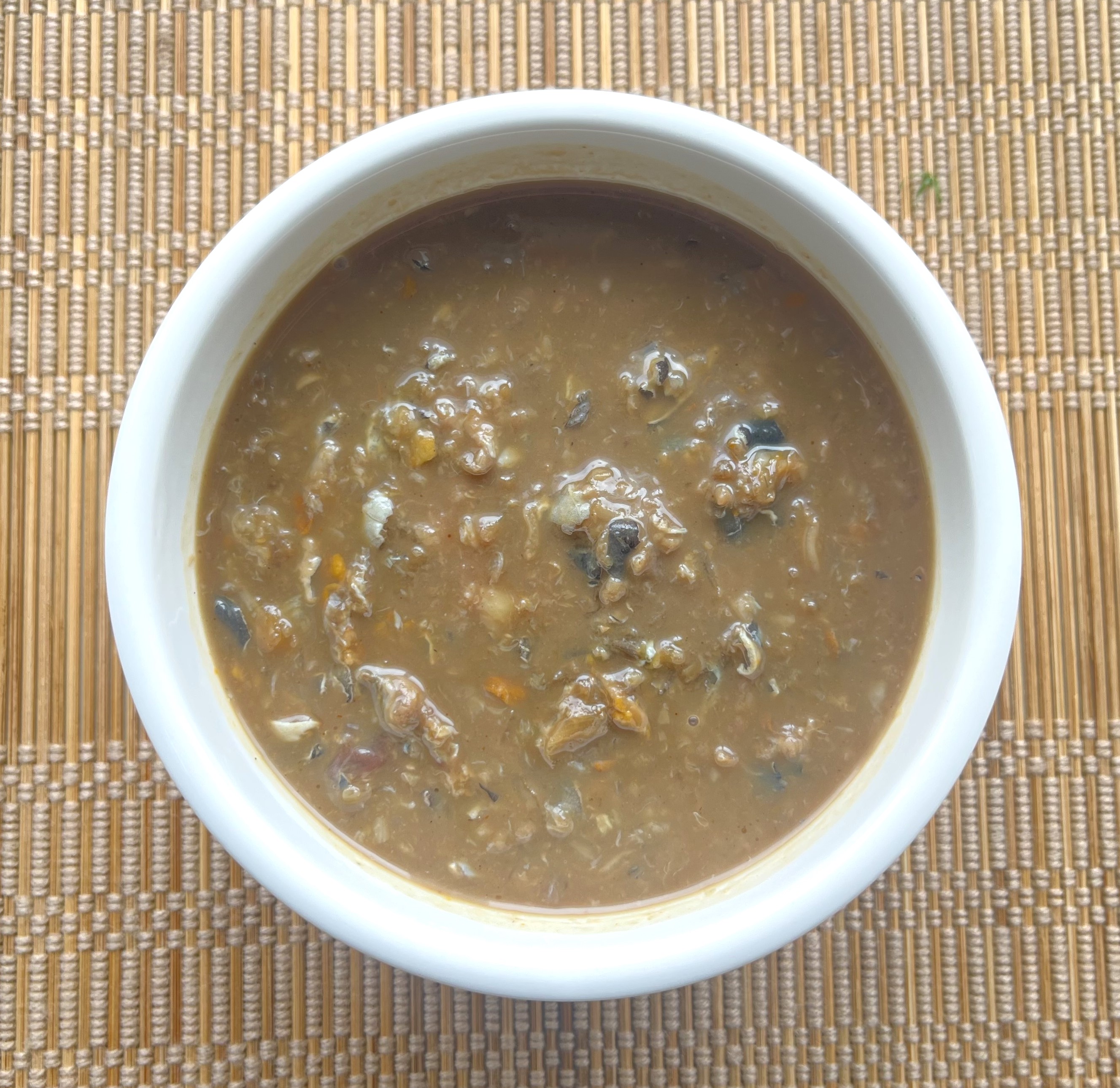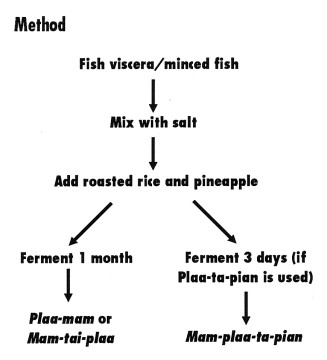Plaa-mam
- Name (Thai)
- ปลาหม่ำ
- Name (English)
- Fermented minced fish and viscera
- Local name
- Plaa-mam, Mam-sai-plaa, Som-khee-plaa.
- Fish normally used
-
Cirrhinus microlepis (Nuan-chan)
Puntius gonionotus (Ta-pian)
- Product
- Fishery
- Ingredients
- Fresh water fish, salt, ground roasted rice.
- Fermentation
- 3 days-1 month, depending on desired products.
- Storage life
- 7 days-4 months.
- Microorganisms
-
該当なしNot available
- Properties
- Semi-solid, salty and sour taste, blackish-red colour with characteristic aroma.
- Method
- Plaa mam is made with both fish viscera and fish flesh. After cleaning they are mixed with salt at the ratio of 3:1 by weight. A small amount of ground roasted rice is added. The ingredients are mixed well and left to ferment for 1 month.
- Production
- In home industry in the Northeast and some provinces in the Central region.
- Consumption
- Plaa-mam is eaten either raw or cooked. The raw dish is mixed with chopped shallots and lemon grass, and eaten with vegetables and rice. The cooked dish has coconut milk added and is served with vegetables and rice.


